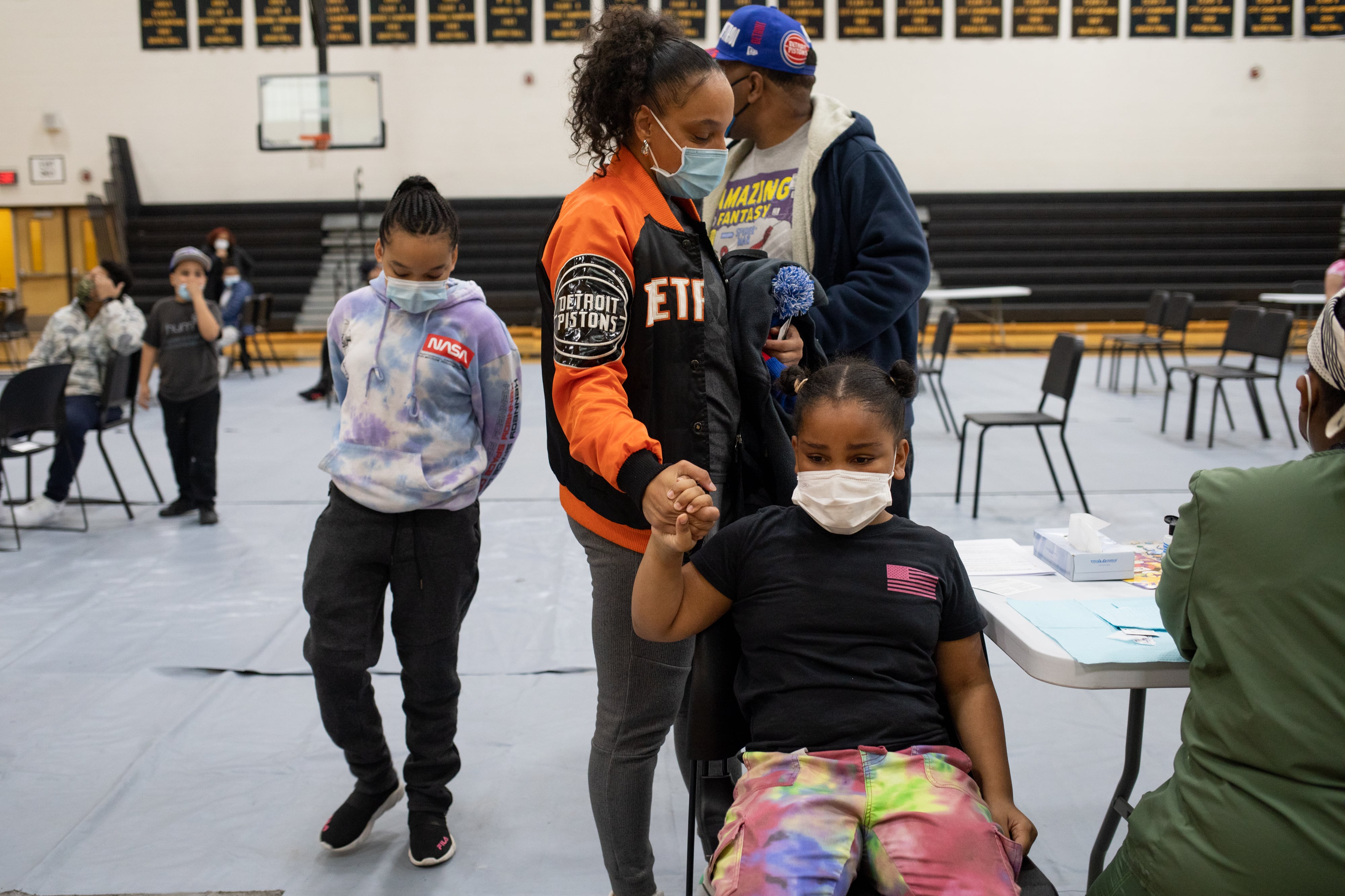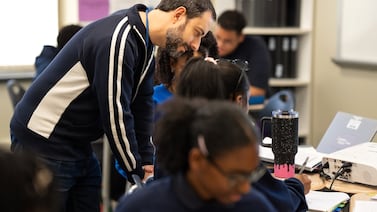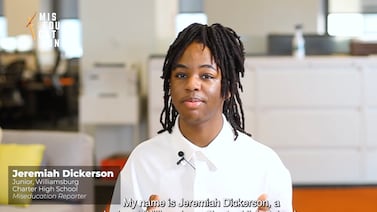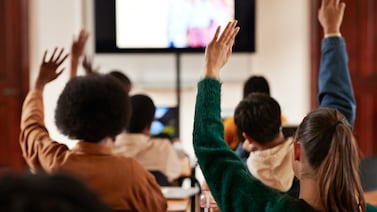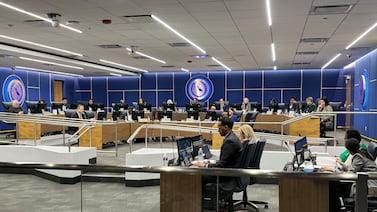With children ages 5 to 11 getting vaccinated, New York City schools may soon see a drop in the number of students participating in their on-site weekly COVID testing program since the program is only supposed to test unvaccinated students.
But the swabs might not go unused.
The city’s education department plans to change its program to allow fully vaccinated school employees to get tested if they wish to do so.
“We have the country’s largest school surveillance testing program for eligible students, and we provide courtesy testing for staff,” education department spokesperson Nathaniel Styer said in a statement on Tuesday. “Now that all school staff are fully vaccinated, we are issuing updated, uniform testing guidelines for all staff who wish to participate.”
The city expects to send more details to school communities on the change soon, officials said.
Amid a rise in coronavirus cases, concerns about breakthrough infections, and the looming threat of the omicron variant, the United Federation of Teachers had called on the city to test vaccinated staffers.
Under current COVID testing protocols, each week schools are supposed to test 10% of unvaccinated students who have submitted consent forms. Roughly 192,000 children — or 35% who were eligible — consented for testing, according to education department data from early October. That was before children ages 5 to 11 were eligible for the vaccine.
The numbers of children tested on a given day might drop further as more children are fully vaccinated. Roughly 24% of the city’s children ages 5 to 12 have received at least one dose, according to city data. (Families must upload proof to the education department’s vaccination portal, and those children will no longer be tested at their schools for COVID.)
One parent already said that her third grade daughter was dismissed from being tested at her Brooklyn elementary school the week before Thanksgiving when she told the test taking company that she had her first COVID shot.
“My daughter said she had gotten one shot and she had her next one coming up after Thanksgiving. They said, ‘OK, you don’t need to be tested. You can go back to class,’” Rabi Whitaker recounted, based on her 8-year-old’s recollections.
Whitaker said she was surprised that her daughter wouldn’t be tested since the vaccine is not considered fully effective until two weeks after the second dose. (Her daughter has now received the second dose.)
“I told her that if she is pulled for testing in the next two weeks, she should say that she is not fully vaccinated yet and she would like to be tested,” Whitaker said. “As far as I can tell, no one consulted a database or anything. I haven’t uploaded her proof of vaccination to the DOE portal yet, though I intend to. She did not have her vaccine card with her. Needless to say, I was taken aback by her report.”
Because of varying consent rates, the number of children tested at each school can vary, a Chalkbeat analysis of public data found. Of more than 6,200 COVID testing days at elementary schools, Chalkbeat found the average testing visit reached about 7.5% of a school’s students based on last year’s enrollment data, which is the most currently available data.
Only five or fewer children were tested during about 200 testing visits, Chalkbeat found.
By only testing a small fraction of the city’s students, its current coronavirus testing program is more like “quality control,” keeping a check on the other safety measures schools employ, such as masking and social distancing, said Dr. Anna Bershteyn, an assistant professor of population health at the NYU Grossman School of Medicine.
“It’s not cutting down transmission. You’re barely making a dent in transmission. If there’s an outbreak underway that’s big they might catch it,” she said. “It’s not seen as a layer of protection. To do that, you would need to test 100% of students on a rolling basis every two weeks.”
So far, coronavirus transmission within schools does not seem widespread: only three out of about 1,600 schools this year have had to close because of cases spreading within their buildings. Schools have seen 2,750 full classroom closures and more than 5,500 partial classroom closures as of Nov. 29, according to city data. There are a total of 65,000 instructional spaces.
Given the few school-wide closures, Bershteyn believes the current testing measures are sufficient.
That said, if there are available tests and too few children to be tested, she believes the city should try and test more people.
“I should hope that testing capacity does not lie unused,” she said. “Never miss an opportunity to test. If you have the test to give, give it.”
Dr. Denis Nash, executive director of CUNY’s Institute for Implementation Science in Population Health and an epidemiology professor at the CUNY School of Public Health, raised concerns about having opt-in testing when the rates are “so low” and about only testing unvaccinated students.
“Both vaccinated and unvaccinated individuals can acquire and transmit the virus,” he said in an email. “The point of surveillance testing is to know the extent to which the virus is circulating in the school, not just the unvaccinated group.”
The question, he asked, is what the education department’s goals are for its testing strategy.
“With the omicron variant, which may be more transmissible and virulent than delta, I think it will be more important than ever to have a robust and reliable surveillance testing strategy in NYC schools,” he said. “ Without such a strategy, we risk delayed outbreak detection and response, thereby increasing the risk to vulnerable students, staff, and teachers, as well as their families/households.”
Thomas Wilburn contributed.

